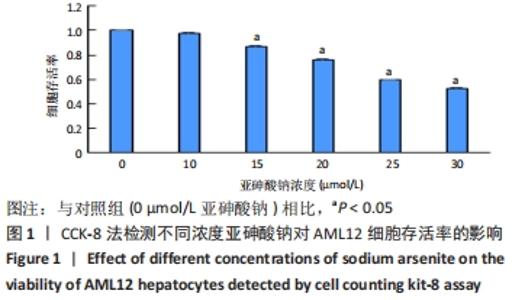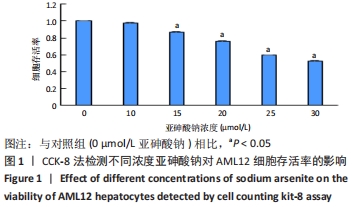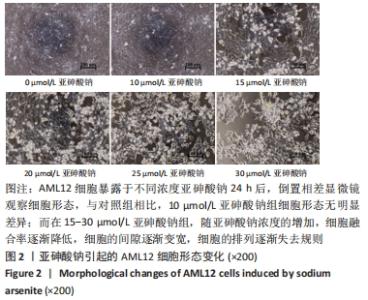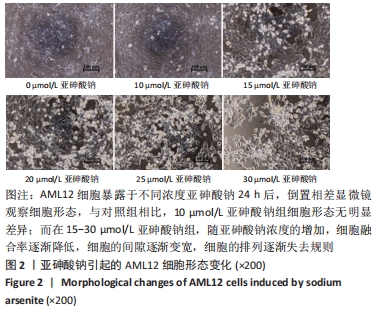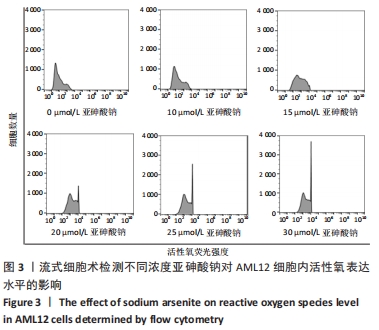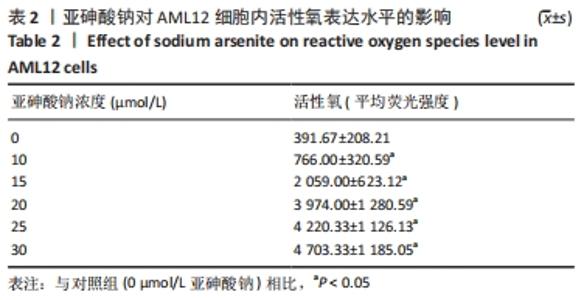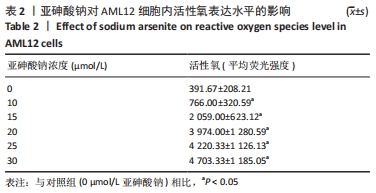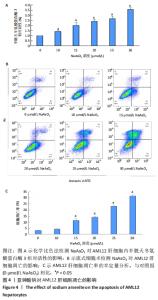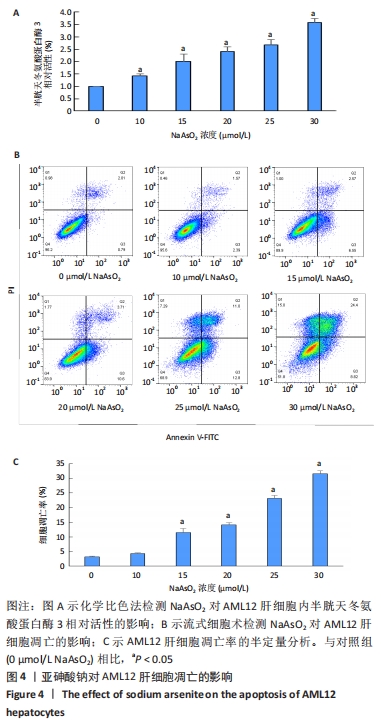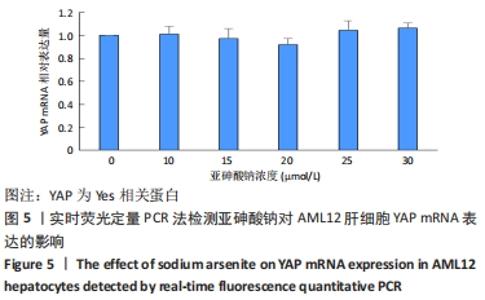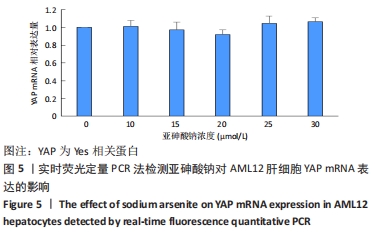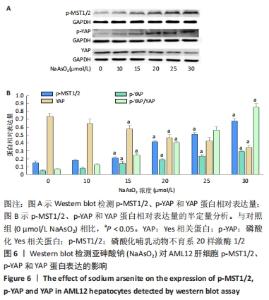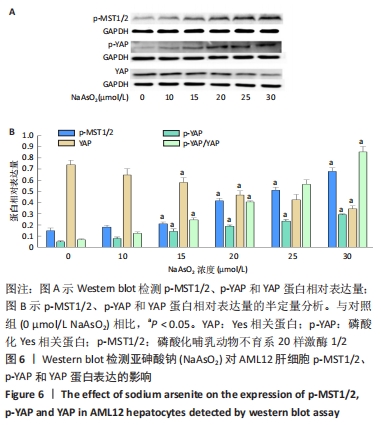[1] CHEN Q, COSTA M. Arsenic: A Global Environmental Challenge. Annu Rev Pharmacol Toxicol. 2021;61:47-63.
[2] BJØRKLUND G, OLIINYK P, LYSIUK R, et al. Arsenic intoxication: general aspects and chelating agents. Arch Toxicol. 2020;94(6):1879-1897.
[3] PRAKASH C, CHHIKARA S, KUMAR V. Mitochondrial Dysfunction in Arsenic-Induced Hepatotoxicity: Pathogenic and Therapeutic Implications. Biol Trace Elem Res. 2021.
[4] RENU K,SARAVANAN A,ELANGOVAN A, et al. An appraisal on molecular and biochemical signalling cascades during arsenic-induced hepatotoxicity. Life Sci. 2020;260:118438.
[5] WU Z, GUAN K. Hippo Signaling in Embryogenesis and Development. Trends Biochem Sci. 2021;46(1): 51-63.
[6] ZHENG J, YU H, ZHOU A, et al. It takes two to tango: coupling of Hippo pathway and redox signaling in biological process. Cell Cycle. 2020; 19(21):2760-2775.
[7] LI C, ZHANG S, LI L, et al. Ursodeoxycholic Acid Protects Against Arsenic Induced Hepatotoxicity by the Nrf2 Signaling Pathway. Front Pharmacol. 2020;11:594496.
[8] JAHANGIRNEJAD R, GOUDARZI M, KALANTARI H, et al. Subcellular Organelle Toxicity Caused by Arsenic Nanoparticles in Isolated Rat Hepatocytes. Int J Occup Environ Med. 2020;11(1):41-52.
[9] BUHA A, BARALIĆ K, DJUKIC-COSIC D, et al. The Role of Toxic Metals and Metalloids in Nrf2 Signaling. Antioxidants (Basel). 2021;10(5):630.
[10] 王甜,赵哲仪,穆银贵,等.亚砷酸钠所致L-02人肝细胞损伤与p14ARF表达下调及MDM2, p53表达增加有关[J].细胞与分子免疫学杂志,2020,36(6):507-512.
[11] FURTH N, AYLON Y, OREN M. p53 shades of Hippo. Cell Death Differ. 2018;25(1):81-92.
[12] 马文靓, 吕曼, 杨杰, 等. 砷致肝损伤作用机制的研究进展[J]. 中华地方病学杂志,2021,40(1):75-80.
[13] CHAZELAS P, STEICHEN C, FAVREAU F, et al. Oxidative Stress Evaluation in Ischemia Reperfusion Models: Characteristics, Limits and Perspectives. Int J Mol Sci. 2021;22(5):2366.
[14] SIES H. Oxidative Stress: Concept and Some Practical Aspects. Antioxidants (Basel). 2020;9(9):852.
[15] FU Y, YE Y, ZHU G, et al. Resveratrol induces human colorectal cancer cell apoptosis by activating the mitochondrial pathway via increasing reactive oxygen species. Mol Med Rep. 2021;23(3):170.
[16] NGUYEN-LEFEBVRE AT, SELZNER N, WRANA JL, et al. The hippo pathway: A master regulator of liver metabolism, regeneration, and disease. FASEB J. 2021;35(5):e21570.
[17] LI HL, LI QY, JIN MJ, et al. A review: hippo signaling pathway promotes tumor invasion and metastasis by regulating target gene expression. J Cancer Res Clin Oncol. 2021;147(6):1569-1585.
[18] MA S, MENG Z, CHEN R, et al. The Hippo Pathway: Biology and Pathophysiology. Annu Rev Biochem. 2019;88:577-604.
[19] LI D, NI H, RUI Q, et al. Mst1: Function and Mechanism in Brain and Myocardial Ischemia Reperfusion Injury. Curr Neuropharmacol. 2018; 16(9):1358-1364.
[20] ZHANG J, LIU J, GAO S, et al. Antiapoptosis and Antifibrosis Effects of Qishen Granules on Heart Failure Rats via Hippo Pathway. Biomed Res Int. 2019;2019:1642575.
[21] MOYA IM, HALDER G. Hippo-YAP/TAZ signalling in organ regeneration and regenerative medicine .Nat Rev Mol Cell Biol. 2019;20(4):211-226.
[22] HENG B, ZHANG X, AUBEL D, et al. An overview of signaling pathways regulating YAP/TAZ activity. Cell Mol Life Sci. 2021;78(2):497-512.
[23] ZHAO W, WANG M, CAI M, et al. Transcriptional co-activators YAP/TAZ: Potential therapeutic targets for metastatic breast cancer. Biomed Pharmacother. 2021;133:110956.
[24] JIN M, WU L, CHEN S, et al. Arsenic trioxide enhances the chemotherapeutic efficiency of cisplatin in cholangiocarcinoma cells via inhibiting the 14-3-3ε-mediated survival mechanism. Cell Death Discov. 2020;6:92.
[25] OOKI A, BEGUM A, MARCHIONNI L, et al. Arsenic promotes the COX2/PGE2-SOX2 axis to increase the malignant stemness properties of urothelial cells. Int J Cancer. 2018;143(1):113-126.
[26] LIU Y, BEYER A, AEBERSOLD R. On the Dependency of Cellular Protein Levels on mRNA Abundance. Cell. 2016;165(3):535-550.
[27] ZHOU W, LIU M, LI X, et al. Arsenic nano complex induced degradation of YAP sensitized ESCC cancer cells to radiation and chemotherapy. Cell Biosci. 2020;10(1):146.
[28] ZHAO Y, ZANG G, YIN T, et al. A novel mechanism of inhibiting in-stent restenosis with arsenic trioxide drug-eluting stent: Enhancing contractile phenotype of vascular smooth muscle cells via YAP pathway. Bioact Mater. 2021;6(2):375-385.
|
